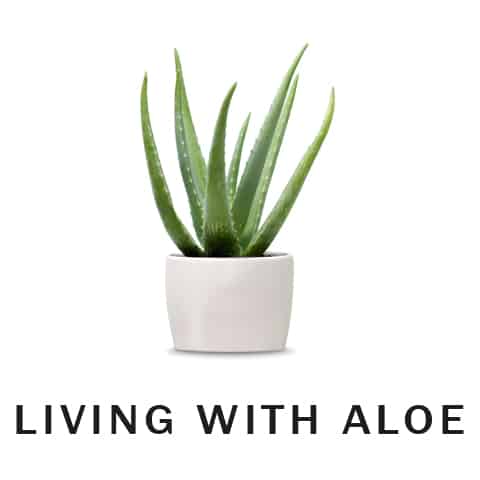
Popular Aloe Vera Recipes and Guide To Preparing Aloe Vera for Consumption
Aloe vera has been used medicinally for thousands of years, which may lead you to wonder if it can be eaten. After all, what we eat often serves as a type of medicine. To understand how eating aloe can be helpful, you need to review the anatomy of the leaves. These leaves are made up of three parts – the skin, the gel, and sap or latex. The gel from the plant contains most the benefits for health.
In fact, the gel provides a refreshing and clean taste, and can be added to recipes, such as salsas and smoothies. To prepare the gel for eating, you need to trim off the spiky border on the sides and top of the leaf. Next, slice the skin on the leaf’s flat side, and dice the clear gel into cubes.
Always Wash the Aloe Vera Cubes Thoroughly
Make sure you wash the cubes thoroughly to get rid of any trace of residue, debris, or dirt. The latex, or sap, can give the otherwise refreshing gel a bitter taste. The latex represents a thin layer that lies between the leaf’s skin and gel. Latex contains laxative properties – one of which is aloin. It is better to avoid the latex altogether, as consuming too much can lead to potentially serious or fatal results.
Preparing the Aloe Leaf’s Skin for Consumption
In contrast, the skin of the leaf, like the gel, is usually safe to eat. The skin possesses a crunchy texture and mild flavoring. Therefore, you can add this part of the aloe vera plant to your summer salads. You can also savor the skin by dipping it into hummus or salsa.
To prepare the skin, remove the spiky edges from the leaf, slicing the skin on the leaf’s flat side, as you did with the gel. After rinsing the debris and dirt, soak the skin about 20 minutes to make it easier to chew. Only select leaves from the aloe vera plant – not from another aloe species. Other species may be poisonous and therefore should not be consumed.
Yummy Poached Aloe
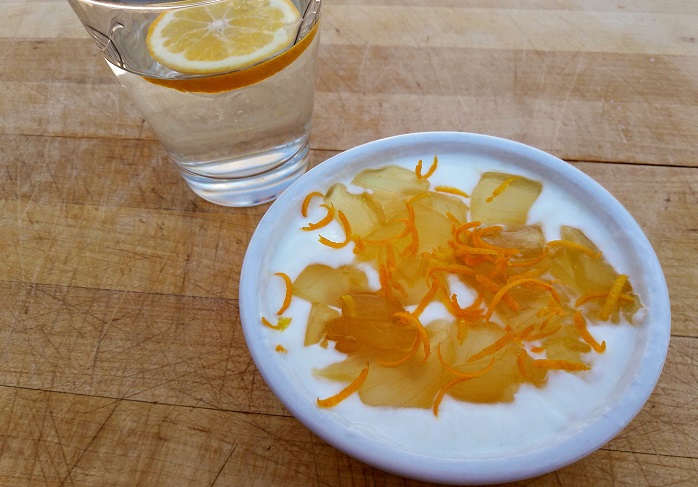
While aloe vera is best known for treating sunburns or injuries, you can drink it and eat it too. For example, instead of eating a poached egg, why not try eating poached aloe gel cubes? The gel, when cubed, will soften and shrink in size, but will not lose its shape.
The best way to eat this culinary delight is sprinkled on top of plain yogurt with some lime zest for taste. Poached aloe with yogurt provides you with a light and refreshing morning treat – one that helps you get off to a great start for the day.
How to Make Poached Aloe
Here is the recipe for poached aloe –
Poached Aloe
(Total preparation time – 10 minutes + Cooking time – 10 minutes) = 20 minutes
Ingredients
Juice of one lime or lemon
1 tablespoon of honey
Aloe leave
Directions
Remove the gel from the leaf, taking care to remove all the residue (yellow latex) and dirt. Cube the gel and place the small cubes into a small saucepan with the lime juice and honey. Cook the mix over medium heat until the gel/liquid loses its sliminess. The cubes should have a grape-like texture. Permit the mix to cool before spooning over plain yogurt. Sprinkle lemon zest optional.
Aloe Vera Gel – Used in Both Japanese and Latin American Dishes
Aloe vera gel is consumed by the Japanese as well as in many Latin American dishes. After all, the plant grows well in this part of the world. Therefore, it is not surprising that it is added to the cuisine. That is why more people should take note of this miraculous plant.
Adding Aloe Vera Gel to Drinks
Aloe vera gel can be combined into drinks and added to a number of taste-tantalizing recipes. For example, “Emoliente” is a traditional beverage that is drank in the region of the Andes. Aloe’s gel is rich in antioxidants or polyphenols. These substances prevent cardiovascular disease and cancer by inhibiting the development of harmful pathogens. Research also shows that the gel may be used to reduce blood glucose levels in diabetics. Studies also show that the gel supports oral health.
A Favorite Latin American Aloe Dish
Just make sure, again, to separate the gel from the yellow latex or sap. The latex has laxative effects that can make people extremely sick and can also be poisonous. You also want to make sure that the skin itself is free of any residue. The following Latin Mexican recipe includes one large leaf of the aloe vera plant in its ingredients. Choose a plump and firm leaf with a smooth green coloring that is free of marks. The gel will be used in this enticingly healthful dish.
Aloe Vera Mango Cerviche
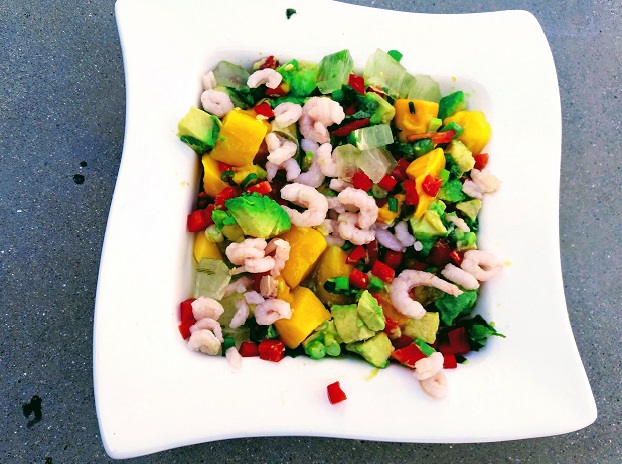
Ingredients
1 large aloe vera leaf
3 tablespoons of fresh-squeezed lemon juice
3 scallions, finely sliced (both the white and green parts)
¾ teaspoon salt
1 small diced mango
1/2 cup minced red bell pepper
1 seeded and minced serrano chili (optional)
3 tablespoons fresh mint leaves minced
1 diced avocado
Small Cooked Shrimp (optional)
2 tablespoons fresh-squeezed lime juice
A garnish lime wedge
Preparation
Extract the gel from the ale vera leaf by laying the leaf flat onto a cutting board. Slice off the top third of the leaf and bottom inch of the leaf. Press the leaf on the cutting board while inserting a large knife into the leaf’s base, or between the green rind and gel on the cutting board side.
Carefully move knife along the leaf to extract the gel from the rind. Flip over the leaf and do the same on the other side. This will leave a long fillet of gel. Dice the gel into 1/2-inch cubes before placing them in a colander. Run the cubes under cold water to remove the yellow latex. Place the rinsed gel cubes into a bowl and mix them with half the salt and lemon juice. Cover and refrigerate overnight or for at least three hours.
Serving the Aloe Vera Gel with the Dish
To serve the aloe vera, place the cubes again into and colander and rinse well beneath cold water until the aloe is not slippery. Drain well and mix the scallions, remaining salt, mango, serrano chili, bell pepper, mint, avocado, and lime juice. Adjust the seasoning, as you wish. Serve the mixture immediately with tortilla chips and the lime wedge garnish. You can refrigerate this mix for as long as a week.
Preparing Aloe Vera for Beverages
The gel from the plant supports health when you used in drinks and smoothies. One benefit of drinking an aloe vera drink is that it can lower the blood sugar of type 2 diabetics. The gel used to make the juice or anything that is eaten should be extracted from an adult plant, about three to four years old. Use a blender to mix aloe vera with another liquid.
To begin the process, remove one to two aloe vera leaves, gently pulling them from the plant. Remove the outer serrated rind with a sharp knife. Doing so will expose the yellow sap or latex, a layer found directly beneath the rind. After cutting through the latex, scoop out the aloe vera gel with the knife’s tip or a small spoon. Place the gel inside a bowl.
Survey the gel closely for any latex residue. Make sure you remove the yellow sap, as this layer can trigger health conditions, such as diarrhea and cramping. Once you rinse the aloe vera gel thoroughly, place it into a blender. Add one cup grapefruit juice or orange juice. Blend the aloe vera with the citrus juice for about three minutes. After it has been blended, it is ready to consume.
One Special Note
Drink the aloe vera drink as soon as the gel is removed and added to the juice. That is because the gel oxidizes rapidly. Any oxidation breaks down the nutritional properties of the gel, causing it to lose some of its potency.
A Historical Superfood
You might say that aloe vera was one of the historical superfoods, as it is nutritionally rich. Aloe vera is filled with good stuff – in fact, it contains 75 active components. The naturally-occurring minerals, vitamins, and amino acids all support good health. To understand aloe vera’s disease-fighting properties as a food, you need to review the benefits of the gel.
Vitamins
Aloe vera gel contains vitamins A, C, E, and the B vitamins, specifically – B1, B2, B3, B6, and B12. Vitamins A, C, and E are all antioxidants, and therefore fight free radicals. These free radicals cause heart disease, cancer, and similar illnesses.
Breaking Down the Nutrients
To be more specific, the above-mentioned nutritional components support health as follows:
Vitamin A
This vitamin supports immune system health and bone growth. It fights off bacterial or viral illnesses.
Vitamin C
This powerhouse nutrient protects against cancer and cardiovascular disease. It also supports immune system health.
Vitamin E
This vitamin promotes a stronger immune system while protecting against cardiovascular disease.
Vitamin B1
Also known as thiamine, this vitamin supports a person’s digestive health as well as the nervous system and immune health.
Vitamin B2
Referred to as riboflavin, B12 is an antioxidant to supplies the body with energy by manufacturing fuel from food. The vitamin also supports the nervous system.
Vitamin B3
Also called niacin, this vitamin can be used to treat migraine headaches, diabetes, and cholesterol. It is also used to support digestive health and cleanse toxins from the body.
Vitamin B6
This vitamin supports digestive health, immunity, and cardiovascular health. The vitamin is also linked to the dopamine and serotonin process. Serotonin and dopamine are both neurotransmitters the regulate various bodily processes, including sleep, the metabolism, and digestion.
Aloe Vera Minerals
Aloe Vera, when prepared for nutrition, also offers the following minerals.
Calcium
This mineral creates strong bones and supports nervous system and cardiovascular health.
Sodium
Often thought in negative terms, sodium still deserves top billing when it comes to regulating the blood pressure, nerves, and muscles.
Magnesium
This mineral support hundreds of bodily processes, including the regulation of blood glucose and immune system functioning.
Iron
This mineral is required for energy and supports the proteins and blood cells in the body.
Potassium
This miner cleans out cells and safeguards vascular health. It helps lower the risk of cardiovascular disease.
Copper
Needed for general health and growth, this mineral maintains cardiovascular functioning and assists in preventing osteoporosis.
Primary Components of the Leaf
Aloe vera also contains the following important components:
Anthraquinones
Aloe vera contains 12 anthraquinones. For example, one of the anthraquinones, emodin, relieves pain and works as an anti-viral and antibacterial agent. Anthraquinones are usually removed from aloe products sold commercially.
Fatty Acids
Aloe vera is made up of four fatty acids, known to have antiseptic qualities and anti-inflammatory properties. The acids contain pain-relieving components.
Polysaccharides
Aloe vera contains acemannan, a sugar. This polysaccharide is noted as having antiviral properties. It stimulates immune system health and eases gastrointestinal difficulties.
Amino Acids, Enzymes, and Hormones
According to researchers at the National Institutes of Health or NIH, aloe vera is known to contain 20 amino acids. Seven of these amino acids are considered essential to human health. The plant also contains eight enzymes, and hormones that aid in healing wounds.
Using Aloe Vera as a Natural Food Preservative
With the number of health components in aloe vera, it is little wonder that it is considered a “miracle” Plant. You can also use the gel as a good preservative. In 2005, Spanish researchers noted that adding a coating of aloe vera to vegetables and fruits caused them to last longer.
In 2014, scientists tested the effectiveness of aloe as a coating used for tomatoes. Research revealed that the gel prevented fungus or parasitic growth on tomato plants. While the quality of the fruit stayed fresh, the aloe did cause a delay in ripening.
Get Started with Better Nutrition – Drinks and Salads
The following recipes will help you enjoy all the nutritional benefits of aloe vera. They are well worth adding to your dietary cookbook.
Aloe Vera Smoothie
Ingredients
1/4 cup of fresh aloe vera gel
1 cup water
1-1/2 cup strawberries (fresh or frozen)
1 tablespoon lemon juice
1-1/2 cup maple syrup
Directions
Blend the mix on high for two minutes.
If you are seeking more of a nutritional boost, add chia seeds or protein powder to the drink.
Aloe and Pineapple Cocktail
Ingredients
1/2 cup of pineapple juice
1/2 cup aloe vera juice
2 tablespoons of cranberry juice, unsweetened
1 tablespoon of honey, optional
Directions
Combine the ingredients in a pitcher and pour over ice. Serve with a lime garnish.
Aloe Basil Salad
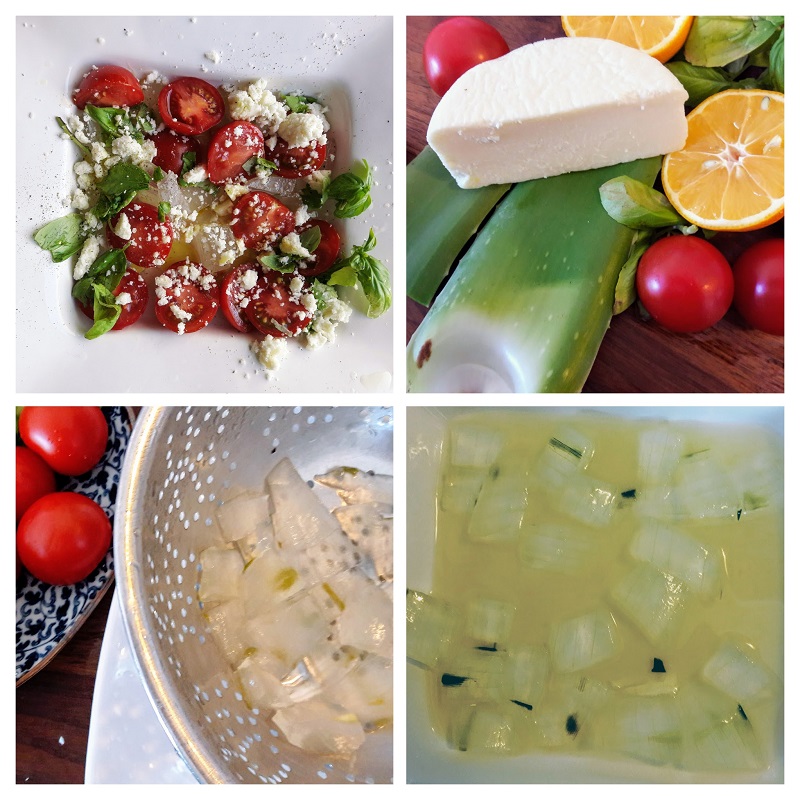
Ingredients
Large, fresh, and plump aloe leaf
Several fresh basil leaves
Medium tomato
2 oz queso fresco
1 lime or lemon
A small dash of garlic powder
Black or white sesame seeds, optional
Directions
Preparing the Aloe
1. Fillet the aloe from the leaf, keeping the “jelly” in one piece.
2. Use a cutting board and a sharp knife. Cut strips of the aloe gel. Place in a bowl and soak in water for 10 minutes.
3. Place stirps in a strainer and drain the water form the aloe. Rinse the gel well before placing the strips into a bowl.
Preparing the Salad
Toss the ingredients, plus the aloe in a large bowl. Crumble queso fresco over. Serve the salad at room temperature.
Aloe Vera and Cucumber Drink
Ingredients
1-1/2 cups of coconut water
1 medium seeded and diced cucumber
2 tablespoons of food-grade aloe vera juice or gel, or fresh aloe gel
1/2 cup peeled, cored, and diced apple
Directions
Combine the aloe vera, applies, and cucumber to a blender. Puree until the mix is smooth. Strain, if needed. Serve the drink immediately over ice.
Health and Beauty Benefits
When drinking and eating aloe, you will find that your hair will take on a new sheen and that consuming the gel will rejuvenate the looks of your skin. The plant also lowers cholesterol and strengthens immune system health.
You can also relieve arthritic pain when adding aloe to your diet. It is best to use the gel fresh as the inner leaf juice, or gel, when produced commercially, may contain carrageenan, which is a thickening agent. The ingredient is known to cause digestive upset.
Ways to Enjoy Aloe
You can gain additional nutritional benefits by simmering aloe vera gel with some of your favorite spices for about an hour. The aloe usually shrinks when cooked in this fashion. You can also include aloe vera in a stew or soup about 30 minutes before the dish is completely cooked. Aloe vera cubes may also be boiled with lemon and lime and a sweetener for a refreshing sweet treat.
Nourishing Your Skin by Consuming Aloe-friendly Foods
You can nourish your skin from the inside out when you consume the following aloe-friendly food. For example, use the following recipe to stay healthy, guilt-free.
Kiwi and Aloe Popsicles
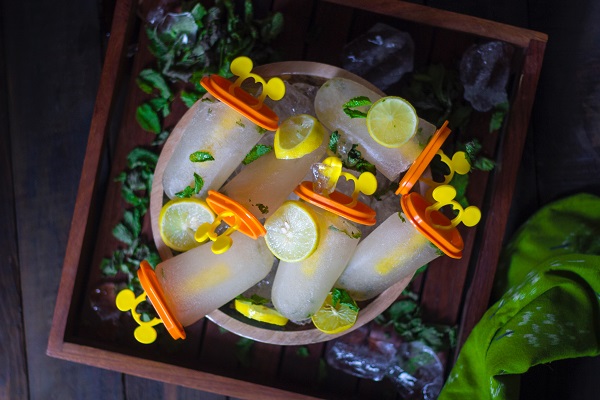
If you live in a place where aloe is usually grown, such as the Southwest, you will love this popsicle recipe. You can obtain the aloe directly from your potted plants or succulent garden. To make this summer-friendly treat, you will need aloe vera gel with honey and one kiwi fruit.
Directions
Peel the kiwi and quarter the fruit. Blend the cut kiwi with the honey and aloe gel. Taste the mix to adjust for taste and consistency. Blend about 1/2 cup of gel and honey. Try to gain a consistency between chunky and smooth. Pour the aloe-honey and kiwi blend into popsicle molds and freeze in the freezer until they are solid.
Where to Buy the Popsicle Molds
You can buy popsicle molds in the Amazon marketplace online. They are made of silicone and are freezer and dishwasher safe.
One of the Healthiest Foods to Eat
Aloe vera is considered one of the healthiest foods to eat by nutritionists. While it may show its health and beauty attributes in a bottle of shampoo, aloe gel and the leaf also boast benefits when consumed. According to one nutritional therapist, the active components in the plant’s inner leaf can be consumed to support immunity, balance out the blood sugar, and lower cholesterol.
Also, the enzymes and fibers in the plant help with the absorption of the nutrients of other foods. Therefore, you should add aloe vera to your diet to support better health. When you consume aloe with a variety of grains, fruits, and vegetables, you can live longer and feel better about yourself. You really cannot find another food that offers this type of assistance nutritionally.
Increased Vitamin C Intake
For example, drinking aloe vera juice can give you a great nutritional boost. Not only does the juice help you stay hydrated, it also amps up the amount of vitamin C you consume. Vitamin C reduces cancer and heart-disease risks, and helps you appear younger. People who drink aloe vera or use it as a mouthwash also suffer less from gum inflammation and disease. The antibacterial and antimicrobial properties of the liquid help achieve these types of results.
An In-between Meal Snack
Whether you cook aloe vera or eat it raw, you will find eating the plant to be advantageous. Just make sure you remove the yellow sap or latex to safely enjoy the plant. For example, you can eat the leaf’s skin, sans the sap, as a snack between meals. Dip the aloe vera in a veggie dip or hummus.
Using the Gel in a Drink
You can also drink the gel from the plant. The gel, again without the yellowy latex or sap, is healthful and supports weight loss. Studies indicate that consuming the gel will help you lose weight and balance out the digestive tract. Drinking the juice also reduces the effects of disease, such as irritable bowel syndrome and diabetes. Just make sure you speak to your physician first before consuming the gel as a drink.
In Conclusion –
If you want to stay fit and maintain better health, you will find that eating or drinking aloe vera can add a boost to your daily nutrition. By growing the plant, you will find that the plant can be used in one of various ways. Why not grow your own aloe vera garden just as you would a garden of herbs? This ancient superfood can easily be added to daily drinks or menus for optimum nutrition and health.
